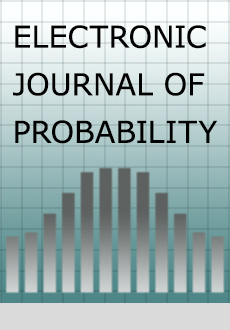Abstract
We consider a biological population in which a beneficial mutation is undergoing a selective sweep when a second beneficial mutation arises at a linked locus. We investigate the probability that both mutations will eventually fix in the population. Previous work has dealt with the case where the second mutation to arise confers a smaller benefit than the first. In that case population size plays almost no rôle. Here we consider the opposite case and observe that, by contrast, the probability of both mutations fixing can be heavily dependent on population size. Indeed the key parameter is $rN$, the product of the population size and the recombination rate between the two selected loci. If $rN$ is small, the probability that both mutations fix can be reduced through interference to almost zero while for large $rN$ the mutations barely influence one another. The main rigorous result is a method for calculating the fixation probability of a double mutant in the large population limit.
Citation
Charles Cuthbertson. Alison Etheridge. Feng Yu. "Fixation probability for competing selective sweeps." Electron. J. Probab. 17 1 - 36, 2012. https://doi.org/10.1214/EJP.v17-1954
Information





